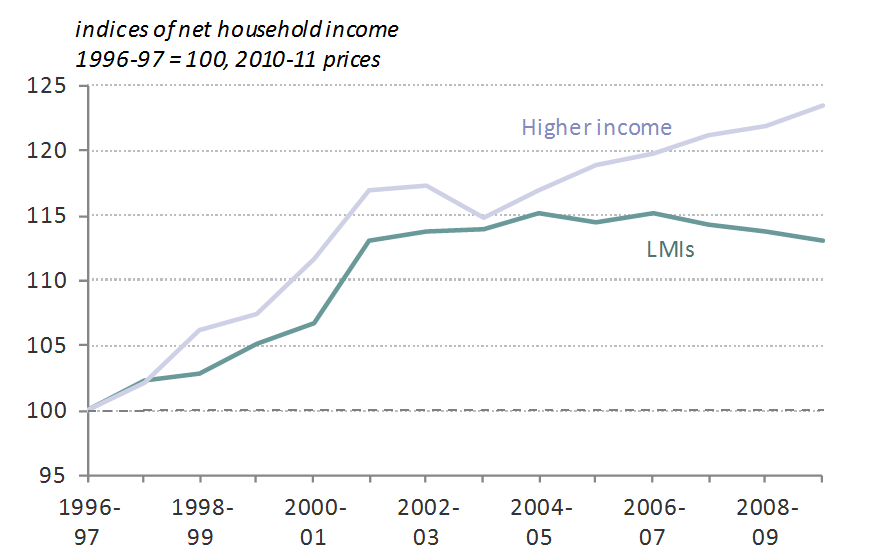The ‘word of the year’ for 2011 is already featuring prominently in 2012. Yep, the ‘squeezed
middle’ is the focus of the Resolution Foundation’s latest report, which they launched in central
London earlier today. It’s a fascinating and nicely presented study, and I’d recommend you read it in full: this think tank really is very good at choosing the most revealing metrics to
bring some clarity to an often vague debate. But, in the meantime, here are some of the things that stood out to me from today’s event:
1. The squeeze started long before the recession. Talk of the ‘squeezed middle’ often focuses on the impact of the recession and the resulting austerity, but the
Resolution Foundation shows that the squeeze began long before. In fact, the ‘middle’ hasn’t seen any real pay rise since around 2003, despite the strong economic growth we saw
until 2008:
2. Why has the middle been especially squeezed? One of the main squeezes on living standards is, of course, inflation. But why has it hit the middle more than the top or bottom?
It’s all to do with what the middle spends its money on. A greater proportion of their income goes towards things like energy bills — which have risen by 110 per cent over the past
decade.
3. Labour still speaking in abstracts. The ‘squeezed middle’ is regarded as fertile territory for Labour — after all, it was Ed Miliband who coined the phrase in the first place. And at today’s event, Liam Byrne demonstrated
an impressive grasp of the concepts involved. In particular, he felt the major problems were the impact of globalisation, the selfishness of the top 1 per cent, the gender pay gap and, naturally,
the government’s cuts. But policies to solve these had he none. His co-panellist David Laws, by contrast, highlighted the Lib Dems’ proudest contribution to the coalition: raising the
income tax threshold. It was a stark reminder that Labour still trail on the specifics, even when it comes to issues they’ve pioneered.
Jonathan Jones
Bringing the squeeze into focus






Comments